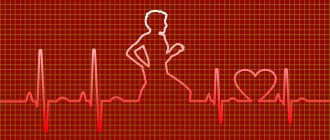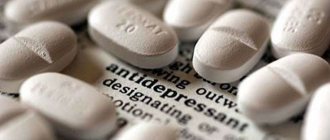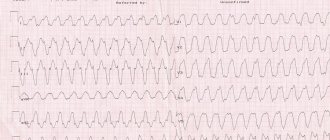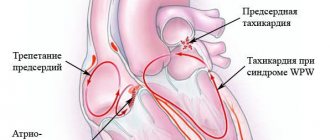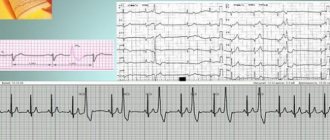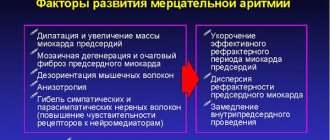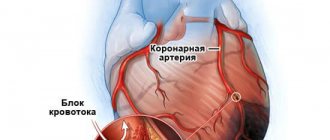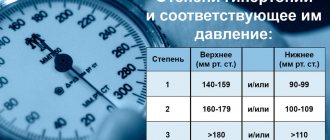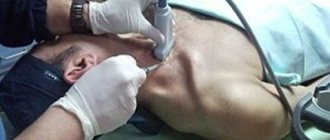Read in this article:
- Why does the heart rate slow down?
- Causes of decreased heart rate
- Types of bradycardia
- Symptoms of low heart rate
- Diagnostic measures
- Actions when your heart rate is low
- Prevention of bradycardia
- Bradycardia can be dangerous
Pulse is considered one of the main biomarkers of the human body. This indicator allows you to assess the condition of the body and the quality of the cardiovascular system. A heart rhythm disorder in which the heart rate slows down is called tachycardia.
Why does the heart rate slow down?
Bradycardia - what is it from a physiological point of view? When the heart beats, its two atria contract first, sending blood into the ventricles. The two ventricles then contract, resulting in blood being pumped into the aorta. From this large vessel it spreads to all tissues and organs.
A special conduction system is responsible for the contractions of the heart. Its work is regulated by the sinus node, located in the wall of the right atrium. It is what slows down the heart rate when a person sleeps and increases it during physical activity. From the sinus node, the impulse is transmitted to the atria, causing them to contract, and then to the ventricles. A decrease in heart rate occurs due to failures at one of these stages.
Forms of the disease SSSU
- Sinus bradycardia
- rhythm with a frequency of up to 60 contractions per minute. It is considered the norm for physically trained individuals, athletes, as well as young people with a predominance of vagal influences on the heart. In addition, during sleep there is a physiological decrease in heart rate by 30%. In other cases, bradycardia accompanies various diseases.Moderate bradycardia may not impair blood circulation, but a rhythm with a frequency of less than 40 beats per minute leads to insufficient blood supply and ischemia (oxygen deficiency) of organs and tissues, thereby disrupting their function.
Regardless of the cause, the basis of bradycardia is a violation of the sinus node’s ability to generate electrical impulses with a minute frequency of more than 60 or their incorrect propagation through the conduction system.
- Sinoatrial block.
With this type of sinus dysfunction, inhibition occurs until the transmission of the electrical wave from the pacemaker to the atria completely stops. In this case, there is an increase in the pause between atrial contractions, their temporary asystole and, as a consequence, the absence of timely contraction of the ventricles, which affects hemodynamics.
The mechanism for the development of blockade can be associated both with blocking the movement of the impulse from the source and with the lack of formation of excitation in the node itself.
- SU stop.
Sinus arrest threatens sudden cardiac arrest. However, more often the role of a source of impulses is taken on by a second order pacemaker (AV node), generating signals with a frequency of 40-60 per minute or a third order (His bundle, Purkinje fibers) with AV block, frequency = 15-40 per minute.
Causes of decreased heart rate
The lower limit of normal heart rate is 60 beats per minute. If the indicator falls below this value, this is usually associated with pathological conditions. Low heart rate can only be considered normal for trained athletes.
In other cases, the causes of decreased heart rate are divided into several groups:
- Extracardiac – diseases not related to the work of the heart;
- Organic – arising against the background of cardiac pathologies;
- Toxicological – caused by intoxication of the body;
- Physiological.
One of the most common causes of slow heart rate is a disturbance in the production of impulses in the sinus node. This happens with myocardial infarction and myocarditis (inflammation of the heart muscle), poisoning and hormonal imbalance. In this case we are talking about sinus bradycardia.
Noncardiac causes of low heart rate include cardiac ischemia, cardiomyopathy, heart failure, and heart defects, both acquired and congenital. Other diseases that cause such manifestations include:
- Severe infections, such as meningitis or diphtheria, typhoid fever or hepatitis;
- Anemia;
- Pathologies of the endocrine glands - diabetes, dysfunction of the adrenal glands or thyroid gland;
- Vegetovascular dystonia;
- Respiratory diseases - asthma, bronchitis.
Toxicological factors can lead to low heart rate. These include uncontrolled use of medications, such as heart stimulants or diuretics. The same applies to the use of alcohol and drugs, smoking, and any acute intoxication of the body. The pulse may decrease due to a lack or excess of sodium, magnesium, potassium, and calcium ions in the body.
As for physiological factors that can cause a slower heart rate, these include prolonged exposure to low temperatures, hormonal changes in adolescents, general fatigue of the body, and slower metabolism in older people.
Diagnosis of SSSU
- An ECG
showing bradycardia of sinus origin with a frequency of up to 40 beats per minute during the day and less than 30 beats per minute at night may indicate sinus dysfunction. SA blockade, pauses of more than 3 seconds, tachy-bradycardia syndrome, migration of the pacemaker through the atria allow us to suspect a weakening of the pacemaker. - A more informative diagnostic method is Holter ECG monitoring
. It allows you to analyze the heart rhythm for a whole day or more, track the connection of disturbances with exercise, taking medications, and identify provoking factors. - In difficult situations, when dysfunction of the SU is not permanent, EFI
. An electrode is inserted into the patient's esophagus, with which the atria are stimulated to a frequency of 140-150 beats per minute, thereby suppressing the activity of the natural pacemaker and observing the time it takes to restore the function of the sinus node after cessation of stimulation.
EchoCG is used to detect organic myocardial pathology
(ultrasound of the heart), less often cardiac tomography.
Types of bradycardia
There are several types of bradycardia:
- Absolute – with a steadily reduced heart rate, which does not increase even with physical activity;
- Relative – the pulse increases in proportion to the degree of load or against the background of infectious diseases;
- Moderate - at rest, the pulse does not exceed 40 beats per minute.
Even if a decrease in heart rate does not bother a person or cause any discomfort, it is necessary to identify the cause of such changes in order to prevent the risk of dangerous complications.
How to increase at home or with folk remedies
Folk remedies against bradycardia in some cases help to quickly restore the pulse. The main thing is to take precautions and not use questionable recipes for low heart rate and low blood pressure. Some prescriptions can only make the condition worse.
It is also important to test for an allergic reaction before using traditional medicine recipes. The mixture is applied to the wrist, and if after some time no rash or itching appears, then the procedure begins.
The easiest way to increase your heart rate is to do a little exercise. If you do physical exercise daily for 15 minutes, your heart rate will stabilize after a while. Swimming has a beneficial effect on heart rate.
A few pieces of dark chocolate also have a positive effect on low pulse and lower blood pressure during hypotension. But to improve your well-being, you need to eat only natural dark chocolate. There should be more than 50% cocoa beans in such a chocolate bar.
An effective remedy against low heart rate and blood pressure is prepared using honey and nuts. To prepare, you need to take a glass of walnuts and grind them in a blender. Add cinnamon or cloves if desired. Add grated lemon zest and add a few tablespoons of linden honey. Mix the medicine thoroughly to obtain a homogeneous mass. Leave in the refrigerator for a day. Take 60 g every day in the morning or evening.
Tea with mint and ginger will help tone the body. Grate the ginger. Pour boiling water over mint leaves, add ginger, honey and cinnamon. Stir and drink like regular tea. Cinnamon is added to tea if desired.
Symptoms of low heart rate
Low heart rate symptoms are signs that accompany a slow heart rate:
- Semi-fainting or fainting states;
- Difficulty breathing;
- Dizziness and weakness;
- Chest tenderness;
- Blood pressure surges;
- Periodic short-term visual disturbances;
- Impaired concentration, memory function;
- Headache;
- Confusion of creation;
- Numbness of the extremities, feeling of coldness in the arms and legs.
With a moderate decrease in heart rate (5-10% of normal), bradycardia may not manifest itself in any way. Symptoms generally appear with a more significant drop in readings.
Drugs
To normalize the pulse with low blood pressure, drug therapy is prescribed in most cases. You need to take medications only with the permission of a cardiologist. The most effective medications for bradycardia and low blood pressure:
- "Isadrin" helps to increase the number of heart contractions and increases cardiac output.
- "Atropine" stabilizes the pulse and increases its performance. Take the drug only after examination by a doctor.
- "Atenolol" blocks nerve endings in the heart muscle, increasing the pulse.
Any medications for bradycardia are taken only after examination by a cardiologist. There are a large number of reasons that lower the pulse, and uncontrolled use of medications can only aggravate the situation.
Diagnostic measures
In order to diagnose bradycardia, the general clinical picture is studied: a person’s lifestyle, his complaints, and accompanying symptoms. A cardiac examination is required to identify possible heart pathologies. The doctor analyzes information about the medications the person is taking and compares the electrocardiogram data with other indicators obtained as a result of laboratory tests and examinations. The classic Holter method or weekly monitoring of the heart rhythm using a special mobile device can be used.
What to take to quickly normalize blood pressure
When an attack of low blood pressure occurs at the wrong time, you need to urgently take action to normalize it.
Means for emergency blood pressure increase:
- Dissolve a spoonful of salt in a glass of water and drink. Sodium, which is part of the salt, helps normalize blood pressure.
- A cup of strong bean coffee increases blood pressure.
- The Citramon tablet will help normalize blood pressure.
- With low blood pressure, tincture of ginseng, eleutherococcus, Rhodiola rosea and Schisandra chinensis helps.
- Licorice root capsules will help relieve an attack.
You need to take only safe and proven products.
Actions when your heart rate is low
Bradycardia can be dangerous, because with rare contractions of the myocardium and slow blood circulation, hypoxia develops. Oxygen starvation has an extremely negative effect on the brain and causes loss of consciousness. If a person is not given prompt assistance, breathing may stop. This is why it is important to know exactly what to do when your heart rate is low.
Help with a decrease in heart rate depends on the reasons that cause it. If we are not talking about heart disease, you can cope with the problem on your own:
- Take Corvalol;
- Drink 20 drops of motherwort twice a day;
- Take Zelenin drops until the pulse is completely restored (the drug has contraindications: organic damage to the heart, pancreas, vision).
If the pulse decreases due to heart disease or other pathologies, you must call an ambulance. Before the doctor arrives, the person must be positioned so that the legs are higher than the heart. For breast tenderness, you can give nitroglycerin, a fast-acting drug that provides relief in just 5 minutes. Belladonna extract can help with the first attacks of bradycardia, but its effect takes about half an hour.
Treatment of SSSU
Treatment tactics for sick sinus syndrome depend on the degree of sinus node dysfunction, the cause of the disease, clinical manifestations, and the severity of hemodynamic disorders. The secondary nature of the pathology implies treatment of the underlying disease.
For mild and moderate forms of SSSS, medications are used. If medications do not have an effect, or a complex, combined with other rhythm disturbances, or acute, severe form of sinus node dysfunction develops, disrupting regional and systemic circulation, installation of a pacemaker is indicated.
Prevention of bradycardia
In order to prevent bradycardia, it is necessary to undergo regular medical examinations, and if you have heart disease, follow all doctor’s recommendations. In such cases, it is very important to systematically measure blood pressure and report significant changes to the doctor. By the way, home automatic blood pressure monitors determine not only upper and lower pressure, but also pulse rate, and also record arrhythmia.
A healthy lifestyle helps to avoid the development of bradycardia: an optimal combination of work and rest, proper nutrition, regular physical activity appropriate for age and health.
Diet
First of all, the main principle of the diet for bradycardia is not to overeat. Meals should be moderate and regular. You need to eat 5-6 times a day. To avoid swelling and additional stress on the heart, it is recommended to limit salt intake. It is also recommended to limit your intake of sugar in any form.
The diet should be composed so that it includes the following products:
- spinach;
- onion;
- baked potato;
- prunes;
- pumpkin;
- honey;
- grape;
- lean meat;
- seafood;
- fresh vegetables and fruits;
- cereals;
- whole wheat bread;
- pasta;
- olive and corn oil.
Foods that should be limited for bradycardia include:
- sausages;
- fatty meat and fish;
- canned food;
- sweet;
- margarine;
- pickles;
- grilled meat;
- fatty foods;
- spices;
- strong tea and coffee;
- alcohol.
If you adhere to proper nutrition and follow medication therapy, your pulse and blood pressure will quickly return to normal.
